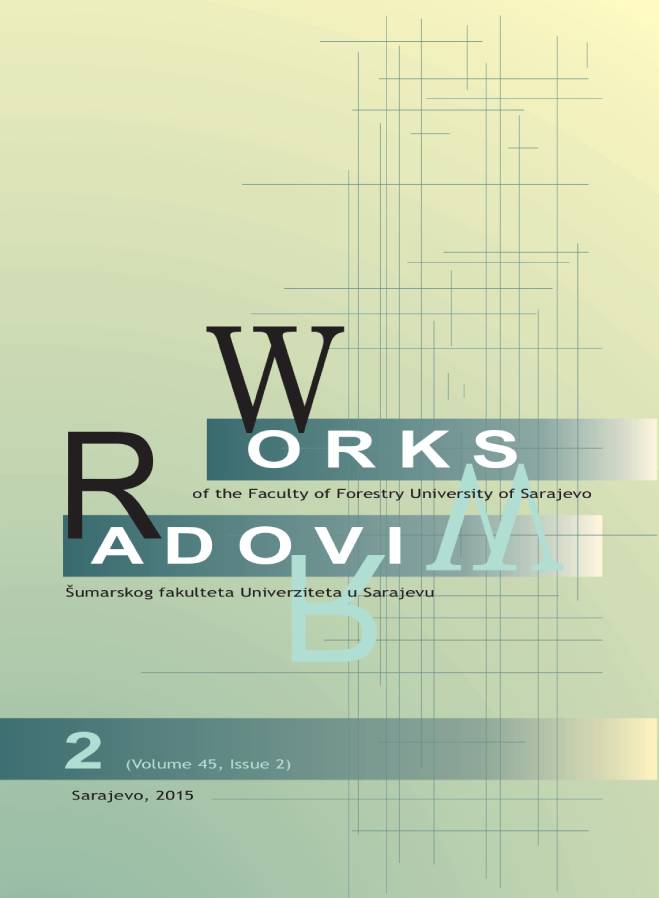DENDROLOGICAL LANDSCAPE VALORISATION OF THE COMMON FIG (Ficus carica L.) IN THE GARDENS OF ŠIBENIK
DOI:
https://doi.org/10.54652/rsf.2015.v45.i2.82Keywords:
fig, floristic research, valorization, esthetic value, landscapeAbstract
UDK: 634.37:712.25(497.5 Šibenik)
The culture of breeding figs (Ficus carica L.) on the area of town Šibenik is greatly connected to rural areas, and in the town system it is rare and sporadic. Its decorative ability is reflected in decorative gray bark, tree tops, fragrant leaves and smaller or larger fruits black or green, which again depends on the cultivar. It is also decorative in the winter period when comes to the fore an interesting shape of the trunk. Because of these decorative characteristics and cultural value of the fig, it is necessary to give fig the meaning in landscape architecture which it belongs considering its contribution to the visual gestalt in authenticity of space. To achieve real aesthetic value of a given area fig should not be used with non-typical Mediterranean species. The aim of this work is to execute landscape valorization, inventarization and to demonstrate esthetic grade of garden landscape with figs. A taxonomic analysis of fig gardens with a spatial accent was completed in Šibenik area. According to the results of field research and considering the habitus type (according to EHHARDT et al. 2002.) it is obvious that gardens are dominated by decorative plants with bushy forms (18 families), followed by tree shapes (8 families). Based on gained results of visual gestalt research and survey interviews we can conclude that citizens experience park spaces with figs as pleasant, and that it really has a great meaning for landscape, which can be used in branding of Šibenik and surrounding areas.
Downloads
References
BORZAN, Ž. (2001): Imenik drveća i grmlja: latinski, hrvatski, engleski, njemački sa sinonimima. Hrvatske šume p.o. Zagreb.
CORNARA, L., LaROCCA, A., MARSSILI, S., MARIOTTI, M.G. (2009): Traditional uses of plants in the Eastern Riviera (Liguria, Italy). Journal of Ethnopharmacology. 125: 16.
DOMAC, R. (1994): Flora Hrvatske. Priručnik za određivanje bilja. Zagreb.
ERHARDT, W., GöTZ, E., BöDEKER, N., SEYBOLD, S. (2002): Zander. Handwörterbuch der Pflanzennamen. 17. Auf. Eugen Ulmer, Stuttgart.
HORVATIĆ, S., TRINAJSTIĆ, I. (1967-1981): Analitička flora Jugoslavije. Šumarski fakultet, Sveučilišna naklada Liber. Zagreb.
IDŽOJTIĆ, M. (2009): Dendrologija-List. Šumarski fakultet Zagreb: 904.
MITIĆ, B., BORŠIĆ, I., DUJMOVIĆ, I., BOGDANOVIĆ, S., MILOVIĆ, M., CIGIĆ, P., REŠETNIK, I., NIKOLIĆ, T. (2008): Alien flora of Croatia: proposals for standard sin terminology, criteria and related dana-base. Natura Croatica. 17 (2): 73-90.
MUJIĆ, I., KALIĆ, S., ŠAROLIĆ, M., GUGIĆ, M. (2014): Prerada smokava. Veleučilište u Rijeci.
ŠUGAR, I. (2008): Hrvatski biljni imenoslov. Matica Hrvatska. Zagreb. 2008: 977.
VIDAKOVIĆ, M., FRANJIĆ, J. (2004): Golosjemenjače. Šumarski fakultet Zagreb. 823.
VEGO, D. (2008): Wild fig (Ficus carica L. var caprificus) in Herzegovina. Pomologia Croatica, Vol. 14, br. 2: 73.






















